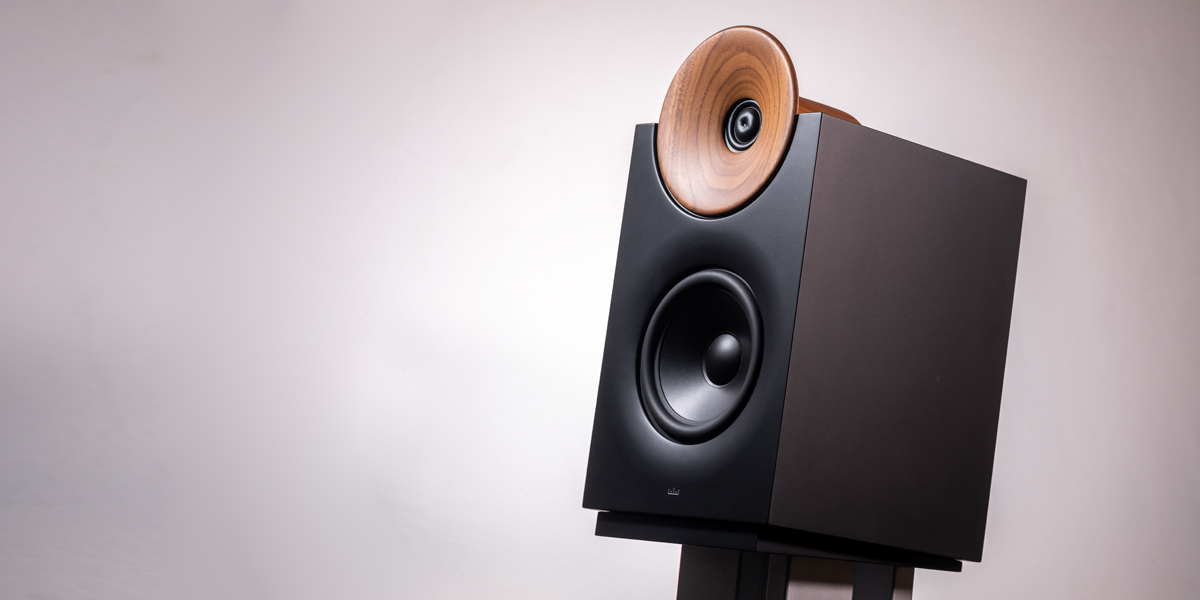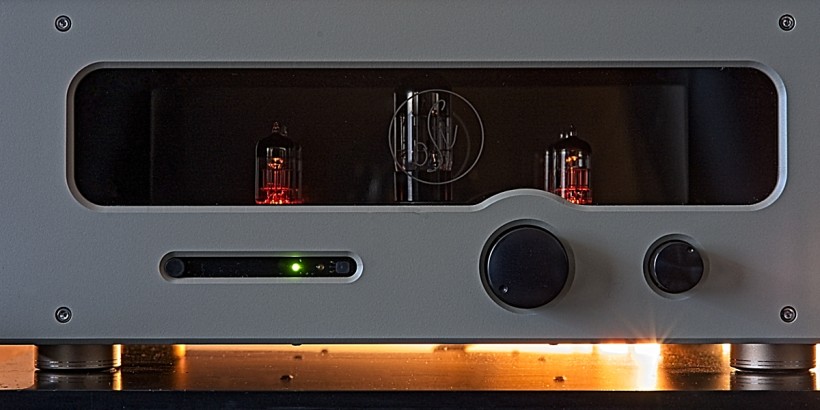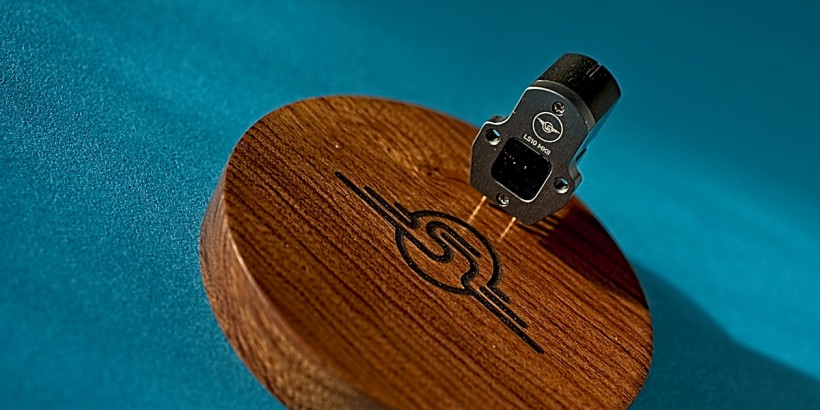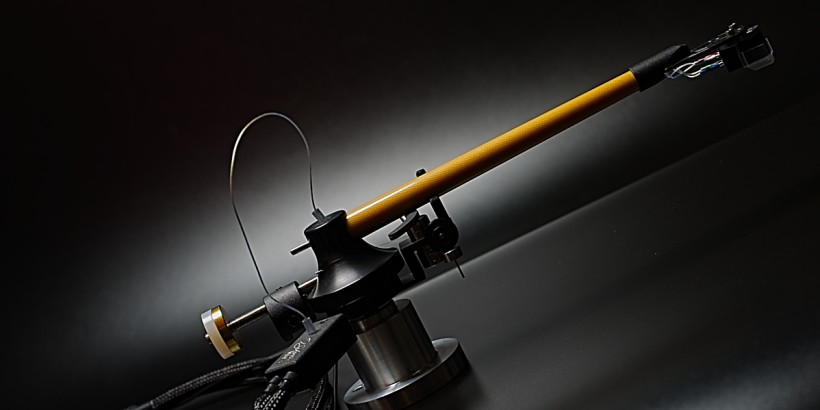During its official debut the Latvian company Aretai had in its roster only one large expensive full-sized speaker set named Contra 350F. Now that family features two products more. The smallest one – Aretai Contra 100S – ended up in my listening room shortly after the recent Audio Video Show event. Enjoy!
Big
To start today’s story let me first backtrack to May 2019, when I attended the annual Munich High End event as per usual. I also visited the nearby Mariott hotel that housed the alternate HiFiDeluxe venue. Although smaller, this parallel attraction to the main gig had lots to offer. Given tight schedule I had to rush through the location, but several its rooms etched deep in my memory and the one occupied by Aretai was on that list. Just to get the basics out of the way, this company was founded in 2018 in the Latvian city of Riga by Jānis Irbe and Edgars Zvirgzdiņš. The former is the engineering brain with experience in the IT sector and was a hobbyist song composer in his student years. After multiple visits to the Munich event, he developed the audiophile bug and also envisioned his own sound profile that called for specific loudspeakers. After tweaking hardware already on the market, learning a thing or two about measurements and psychoacoustics and simply gaining knowledge, the decision was made to build such a product from scratch. That’s how Aretai Contra 350 came to be seven years and many iterations later. This looker was recently awarded with the Red Dot Design badge and Edgars takes the credit for that, visual styling is his domain. He’s a graphic designer by trade with 15 years of experience and his very own agency, who also handles Aretai’s business strategy and branding. Just one look at the company’s professional site is enough to notice that Edgars knows what he’s doing.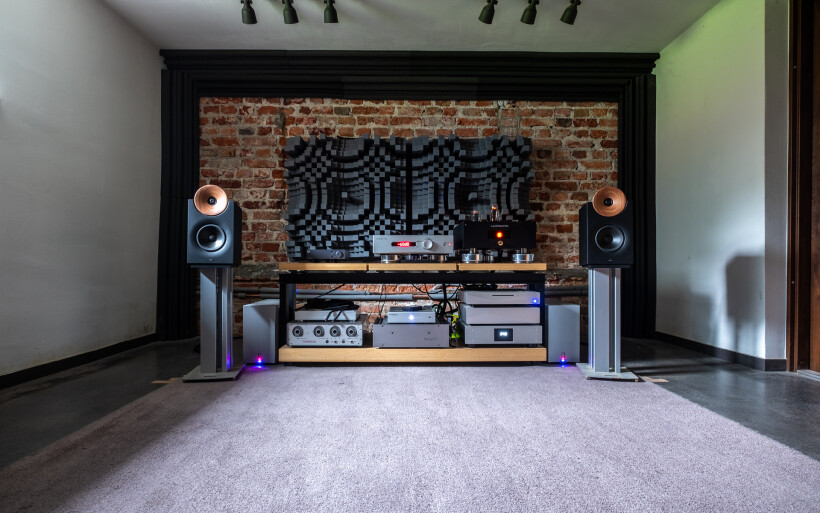 I didn’t envy Jānis at the Marriot hotel. His room located at one of the building’s upper floors meant low traffic and according exposure. The man remained calm, confident and collected however. Rome wasn’t built in a day, so he knew that all the effort poured into his and Edgars’ business had to pay off eventually. Since their introductory Contra 350F model was clearly meant for spaces larger than mine and the only one they had back then, a review was off the table. On the upside, I remembered the brand’s name and just the individual to contact in the future. Fast forward to late 2022. During the recent Warsaw show Jānis exhibited at the Radisson Blu Sobieski hotel, where I saw Aretai Contra 200F floorstanders just next to the stand-mount Contra 100S model that instantly had my attention. A brief audition sufficed to target a highly promising performer profiled to work wonders in small spaces. Hey, don’t blame press people for being marksmen during audio events. If a fine game appears in their sight there, they observe, inspect, take aim and eventually pull the trigger, which is what I did. As a Warsaw resident I had to ask my host whether he had any plans for his latest design after the event. ‘Now I do’ was his answer that trivialized logistics. The loaner sample I collected from Jānis inhabited two tank-like HDF coffins designed to survive car trips from Riga to Warsaw and back. The two of us managed these with ease and I didn’t miss the original packaging.
I didn’t envy Jānis at the Marriot hotel. His room located at one of the building’s upper floors meant low traffic and according exposure. The man remained calm, confident and collected however. Rome wasn’t built in a day, so he knew that all the effort poured into his and Edgars’ business had to pay off eventually. Since their introductory Contra 350F model was clearly meant for spaces larger than mine and the only one they had back then, a review was off the table. On the upside, I remembered the brand’s name and just the individual to contact in the future. Fast forward to late 2022. During the recent Warsaw show Jānis exhibited at the Radisson Blu Sobieski hotel, where I saw Aretai Contra 200F floorstanders just next to the stand-mount Contra 100S model that instantly had my attention. A brief audition sufficed to target a highly promising performer profiled to work wonders in small spaces. Hey, don’t blame press people for being marksmen during audio events. If a fine game appears in their sight there, they observe, inspect, take aim and eventually pull the trigger, which is what I did. As a Warsaw resident I had to ask my host whether he had any plans for his latest design after the event. ‘Now I do’ was his answer that trivialized logistics. The loaner sample I collected from Jānis inhabited two tank-like HDF coffins designed to survive car trips from Riga to Warsaw and back. The two of us managed these with ease and I didn’t miss the original packaging.
Aretai Contra 100S is the manufacturer’s entry-level sealed 2.5-way stand-mount effort that incorporates three SB Acoustics drivers per channel; a 1” soft-dome tweeter and two 6” mid-woofers. Each speaker measures (W x H x D) 21 x 40 x 25cm and weighs 15kg, so these are small albeit heavy suckers. The on-site specs informs us about 32Hz-30kHz frequency response, 4Ω nominal impedance and 85dB (@1m/1W) sensitivity. These figures make me expect that the most affordable Aretai rather challenging to drive, just as most other high-performance stand-mount speakers out there. In its base black&white matt finish it sells for €7’500 without VAT, while alternate colors and veneers are priced individually. Wooden waveguides as shown add €1’000 to the bill, so they’re rather costly in comparison to their stock white counterparts made from painted MDF. The rear panel sports nice gold-plated ViaBlue binding posts that accommodate spades, BFA/banana plugs and bare wire. Should you wish to bi-amp, extra terminals can be added upon order as an option.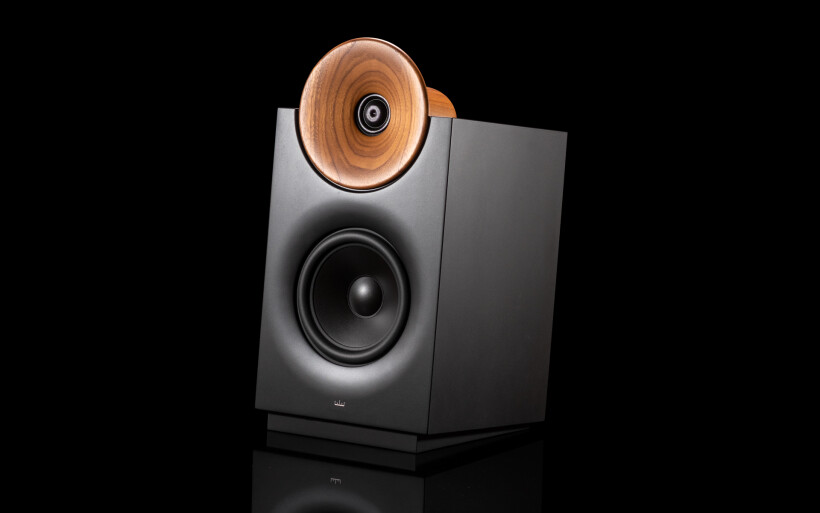 Although Aretai is a newcomer to the audio biz, my sample’s build quality and attention to detail said otherwise. In hand it felt massive and its exterior was free from all bolts, even those that locked transducer baskets into place. Each speaker sat atop a narrow angled base with a thin anti-vibration pad in-between. That in combination with a rectilinear frame and fine satin-like varnished finish resulted in a clean modern universally appealing Scandinavian dress code that accurately reflects Edgars’ mindset. As a professional graphic designer he sees every non-essential component as visual noise that must be removed. Less is more and all that jazz. The thing is, to hide unwanted stuff Aretai goes noticeably further than many well-established speaker houses with pricier lineups, so kudos for that. Jānis explained that their visually seamless cabinets feature sliding dovetail joints for extra-strong connections, all elements are treated in a moisture-proof sealant and glue is moisture-resistant too. Top waveguides expertly incorporated in these boxes are detachable in a drawer-like manner and held in place via magnetic fasteners.
Although Aretai is a newcomer to the audio biz, my sample’s build quality and attention to detail said otherwise. In hand it felt massive and its exterior was free from all bolts, even those that locked transducer baskets into place. Each speaker sat atop a narrow angled base with a thin anti-vibration pad in-between. That in combination with a rectilinear frame and fine satin-like varnished finish resulted in a clean modern universally appealing Scandinavian dress code that accurately reflects Edgars’ mindset. As a professional graphic designer he sees every non-essential component as visual noise that must be removed. Less is more and all that jazz. The thing is, to hide unwanted stuff Aretai goes noticeably further than many well-established speaker houses with pricier lineups, so kudos for that. Jānis explained that their visually seamless cabinets feature sliding dovetail joints for extra-strong connections, all elements are treated in a moisture-proof sealant and glue is moisture-resistant too. Top waveguides expertly incorporated in these boxes are detachable in a drawer-like manner and held in place via magnetic fasteners.
Today’s enclosure material of choice comprises internal MDF boards glued with acoustically damped Plywood exterior. The latter material leaves its sectional lines nigh impossible to have them smoothly processed at the curved recessed areas of the product. To overcome this issue, black or veneered Contra 100S versions have their front and rear baffles machined from MDF/solid wood respectively. Paint covers MDF nicely, but veneer sheets don’t bend well on three-dimensional structures, so Aretai’s founders decided to use real wood walls instead. I was told that this material diversity doesn’t affect sound quality because all the internal damping inside the product makes it acoustically dead already. I applaud Jānis for being upfront on the subject.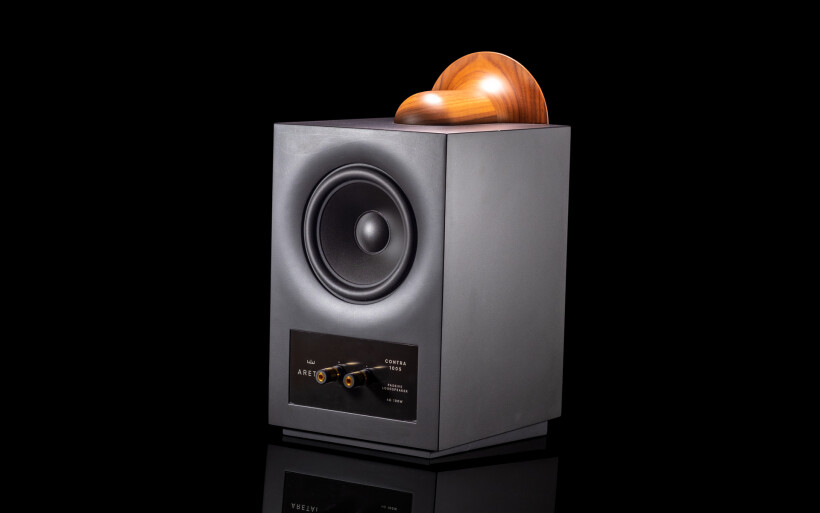 When asked about the general concept behind Contra 100S, Jānis replied: “Speakers sound vastly different in anechoic and reflective environments. In moderately active spaces i.e. most living rooms, aligning the indirect or sideways and upwards spectrum with the on-axis response is the key to having a properly perceived tonal balance. Technically it is hard to achieve, as most transducers narrow their dispersion with frequency increase. Many speakers sound dull in reflective rooms, as there isn’t enough reflected energy in the upper-midrange and upper-highs. It is less critical in studios and heavily damped listening rooms where excess midrange reflections are ‘killed’ instead. But there you lose a lot of the spacious lively feel that a well-controlled speaker can unleash in the semi-reflective room. One of our design goals right from the start was to save this liveliness by providing a properly aligned indirect spectrum.”
When asked about the general concept behind Contra 100S, Jānis replied: “Speakers sound vastly different in anechoic and reflective environments. In moderately active spaces i.e. most living rooms, aligning the indirect or sideways and upwards spectrum with the on-axis response is the key to having a properly perceived tonal balance. Technically it is hard to achieve, as most transducers narrow their dispersion with frequency increase. Many speakers sound dull in reflective rooms, as there isn’t enough reflected energy in the upper-midrange and upper-highs. It is less critical in studios and heavily damped listening rooms where excess midrange reflections are ‘killed’ instead. But there you lose a lot of the spacious lively feel that a well-controlled speaker can unleash in the semi-reflective room. One of our design goals right from the start was to save this liveliness by providing a properly aligned indirect spectrum.”
Aretai Contra 100S is a fair bit unusual 2.5-way affair. Both its 6” drivers are identical and share the same internal volume, half-filled with dense absorber material meant to suppress cavity resonances leaking through their polypropylene cones. The transducer on the back is a full-fledged woofer crossed at 200Hz, while the one on the front operates as a widebander with several notch filters to attenuate breakup peaks and is subject to a 1st-order high-pass filter that compensates for its raising response. The tweeter sits inside a shallow horn and is crossed at around 6kHz via a two-cascade high-pass filter. This waveguide bends the high frequencies to maintain wide dispersion and improve soundstage size, therefore it contributes as an ambience booster. As Jānis explained, both front drivers work in attenuated concurrence over the upper midrange band to achieve point-source radiation and correct tonal balance no matter how reflective the room is. He didn’t find any info on how to design a crossover for this specific purpose, so he had to walk that path on his own. As he put it, the modeling software does good on predicting the driver’s on-axis response yet lacks accurate simulation data for dispersion patterns of transducers inside unusually shaped baffles. The solution came after studying various drivers, several good books and AES papers on room interaction and psychoacoustics. The final crossover network in Contra 100S features 20 elements within <3% tolerances. The internal wiring is silver-plated OFC copper.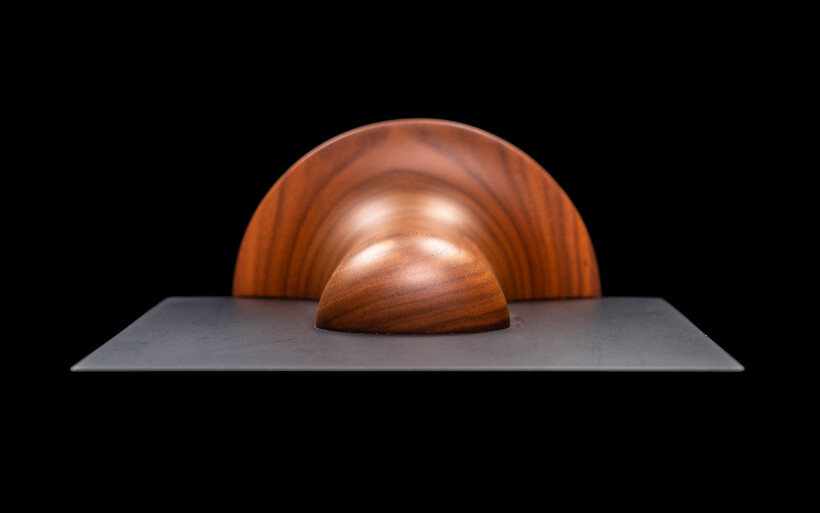 And lastly, names and symbols. The speaker series ‘Contra’ expresses Jānis and Edgars’ defiance against going with the industry’s usual speaker design flow. The company’s logo resembles either a crown or a volume scale and the brand name ‘aretai’ stands for ‘virtues’ in the ancient Greek language. On the Aretai website we learn that Jānis stopped his design efforts and released his introductory product when it sounded the way that nothing sonically bothered him anymore. As we all know, speakers virtuous in every possible regard don’t exist, but some cover more bases than others. Now let’s find out how many these pinnacles Aretai Contra 100S managed to climb.
And lastly, names and symbols. The speaker series ‘Contra’ expresses Jānis and Edgars’ defiance against going with the industry’s usual speaker design flow. The company’s logo resembles either a crown or a volume scale and the brand name ‘aretai’ stands for ‘virtues’ in the ancient Greek language. On the Aretai website we learn that Jānis stopped his design efforts and released his introductory product when it sounded the way that nothing sonically bothered him anymore. As we all know, speakers virtuous in every possible regard don’t exist, but some cover more bases than others. Now let’s find out how many these pinnacles Aretai Contra 100S managed to climb.
Prior to any listening tests I had to set up Contra 100S in my room and select suitable companions for it. Both these activities were straightforward. My platform comprised of the Innuos Statement server/streamer, LampizatOr Pacific DAC and Trilogy 915R/995R analog set plus all the usual accessories and cables. As much as I wanted to use Enleum AMP-23R, the Aretai’s appetite for power was higher than expected, so no dice. Since the latter’s compact footprint and topology weren’t too far off from sound|kaos Vox 3afw, these two products naturally had to fight. Let me say as early as now, what an entertaining brawl this was!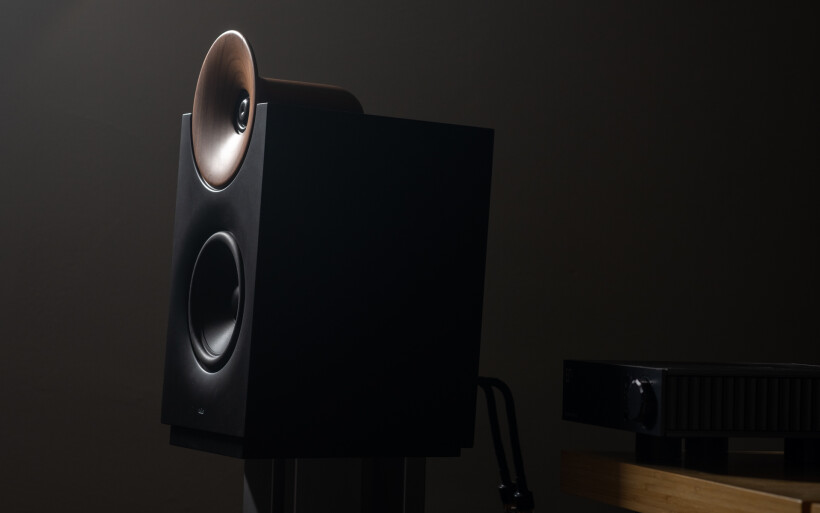 Ports can be very troublesome especially in small spaces such as mine, while products without these openings integrate with it easier. That makes sealed speakers augmented via rear-firing woofers or passive membranes easygoing predictable types and I fancy their breed a lot. The principle here is simple; the more we hear a speaker’s direct waves rather than their reflections bouncing off nearby walls, the better performance we get in return. Speaking of, since during the local show Contra 100S in a nearfield setup did truly well at the Radisson Blu Sobieski hotel’s tiny Aretai room, it was only fair to expect as trouble-free action at my place. Here I mean stout bass response, overall clarity and authority without any hints of wobble, excessive bloom or fuzz. Long story short, that’s exactly what I got, albeit with an unexpected twist.
Ports can be very troublesome especially in small spaces such as mine, while products without these openings integrate with it easier. That makes sealed speakers augmented via rear-firing woofers or passive membranes easygoing predictable types and I fancy their breed a lot. The principle here is simple; the more we hear a speaker’s direct waves rather than their reflections bouncing off nearby walls, the better performance we get in return. Speaking of, since during the local show Contra 100S in a nearfield setup did truly well at the Radisson Blu Sobieski hotel’s tiny Aretai room, it was only fair to expect as trouble-free action at my place. Here I mean stout bass response, overall clarity and authority without any hints of wobble, excessive bloom or fuzz. Long story short, that’s exactly what I got, albeit with an unexpected twist.
Rear woofers inside closed cabinets enjoy coupling with the front wall that extends their bass output, albeit at a cost of somewhat flat distant less enveloping perspective that takes away immersion. Conversely, proper imaging depth and presence demand speakers further away from that surface and relatively close to the listening chair. For that we pay in decreased bass amount. The balance between downstairs reach and spatial layering has to be manually adjusted as per one’s individual preferences and room. Not all speakers are equal here; some are happier with lots of space around, others not so much. On top of that, stand-mount designs infused with full-range/coaxial drivers already are ace on imaging specificity due to their inherent point-source dispersion pattern. In the context of spatial layering that’s a very useful trait indeed. sound|kaos Vox 3afw petites make that point nearly from the middle of my room and some two arm’s lengths away from the listening seat. Set up like so they fully vanish from sight and cast nicely bent surrounding landscapes busy with sound sources as tangible, clear and intimate as they get. These aggressively toed in Swiss boxes also have their rear ports conveniently aimed at my crib’s side walls, which naturally reinforce their bass. Although that positioning strikes many visitors as quite radical, it effectively turns the Vox into a highly articulated brilliant imaging fiend that doesn’t disappoint on tasks downstairs. With that in mind, now let’s move to the Aretai. The Contra 100S set up some half a meter away from my room’s brick wall was an instant overkill on bass. This was actually good news considering the paragraph above. I simply knew that the Latvian lustered for more space, while along with increasing that distance all the extra layers started showing up just as they should. When one meter still wasn’t enough, I had a grin on my face and seatbelt fastened. Eventually the Aretai stood where the Vox usually does and behaved remarkably well there. The takeaway was painfully obvious. I honestly thought that the former’s rear arsenal had to be really close to the wall. Not today, but that’s not the best part still. The Contra 100S set up two meters away from that surface just like the Swiss was exceptionally gifted on bass and geared for hard snappy hits without any assistance. That’s the twist. Actually, it was silly good in these regards and utmost spectacular not only given its compact frame. In my room the Aretai acted more like a floorstander rather than a bookshelf warrior. This observation alone made a world of difference later on.
The Contra 100S set up some half a meter away from my room’s brick wall was an instant overkill on bass. This was actually good news considering the paragraph above. I simply knew that the Latvian lustered for more space, while along with increasing that distance all the extra layers started showing up just as they should. When one meter still wasn’t enough, I had a grin on my face and seatbelt fastened. Eventually the Aretai stood where the Vox usually does and behaved remarkably well there. The takeaway was painfully obvious. I honestly thought that the former’s rear arsenal had to be really close to the wall. Not today, but that’s not the best part still. The Contra 100S set up two meters away from that surface just like the Swiss was exceptionally gifted on bass and geared for hard snappy hits without any assistance. That’s the twist. Actually, it was silly good in these regards and utmost spectacular not only given its compact frame. In my room the Aretai acted more like a floorstander rather than a bookshelf warrior. This observation alone made a world of difference later on.
To simplify, if ported bass has this particularly round warm bloomy character to it and sealed cabinets make it leaner, more firm, harder and quicker, then the Aretai did both. Although at first it struck me as ‘just’ soft on these low edges, dense and texturally ripe, several wicked synth tracks from my playlist revealed its utmost sporty tactile demeanor; fine contours, admirable quickness and momentum, sensible crack, elasticity, vigor and the ability to effortlessly land series of powerful pulsating jabs deep inside my chest. To my ears there were no downsides to that. Such performance from a small stand-mount speaker set doesn’t happen every other day. It rendered the Aretai a very potent big-bore type capable of pushing copious amounts of air my way and in general highly entertaining stunts its modest cabinets honestly shouldn’t do. I truly hadn’t seen all that coming. Interestingly, the Latvian’s bass was brilliantly composed even on calm atmospheric tribal recordings loaded with spatially enormous anchored lazy drums. These instruments auditioned at high SPL often become shaky and smeared, but with the Contra 100S on such jobs my room was free from the usual well-mapped turbulences. Dare I say, it was enjoyably peaceful in that sense. Good job!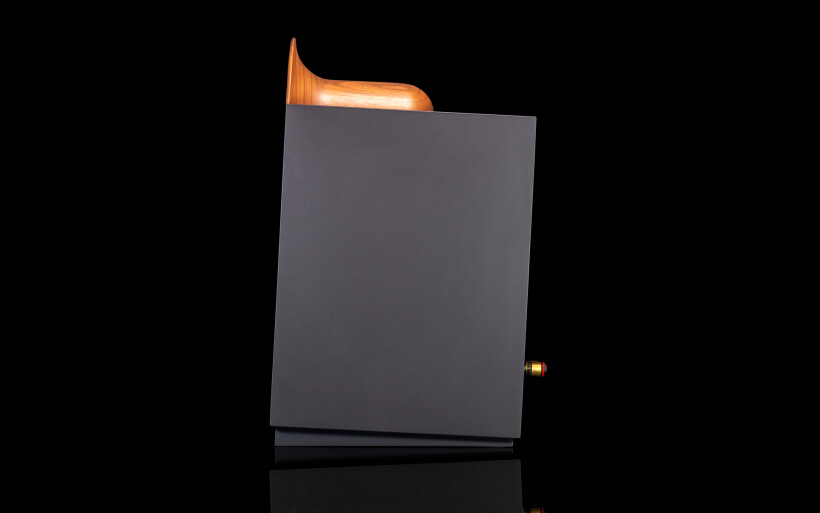 The way how today’s specimen was tuned left no room for guesswork. Its bass was the foundation upon which all else was built, which steered the entire sonic perspective towards the dimmed down highly atmospheric realm. That meant lesser emphasis on radiance, luminosity and air. Think of this voicing as a cozy roomy domestic space with just one warm light source rather than a large hall with multiple bright white floodlights suspended up high. Although that’s the Contra 100S’ rough psych profile, it doesn’t fully encapsulate what it is. At its core this speaker set was no brute unless I wanted to. It had tools to instantly become one upon demand, but most of the time it remained pleasantly relaxed, eloquent, romantic and texturally wet. Upon asking Jānis whether this was the sound he pursued, the man only smiled and confirmed. A highly capable speaker set that goes really loud without shout, fatigue or any hints of struggle was the ultimate goal. I’ve found that deliberate tuning very smart and his Contra 100S tastefully executed and mature, while the in-built monster mode made it this much spicier and special.
The way how today’s specimen was tuned left no room for guesswork. Its bass was the foundation upon which all else was built, which steered the entire sonic perspective towards the dimmed down highly atmospheric realm. That meant lesser emphasis on radiance, luminosity and air. Think of this voicing as a cozy roomy domestic space with just one warm light source rather than a large hall with multiple bright white floodlights suspended up high. Although that’s the Contra 100S’ rough psych profile, it doesn’t fully encapsulate what it is. At its core this speaker set was no brute unless I wanted to. It had tools to instantly become one upon demand, but most of the time it remained pleasantly relaxed, eloquent, romantic and texturally wet. Upon asking Jānis whether this was the sound he pursued, the man only smiled and confirmed. A highly capable speaker set that goes really loud without shout, fatigue or any hints of struggle was the ultimate goal. I’ve found that deliberate tuning very smart and his Contra 100S tastefully executed and mature, while the in-built monster mode made it this much spicier and special.
The full-range topology promises quite a few things. Just one main sound source per channel ups the ante on accuracy, clarity, quickness and openness. This package also prevents spatial blur, veil and stagnation. Let me stress that by my standards compact monitor speakers with such drivers are unrivalled on these fronts and way ahead of most regular floorstanding types infused with multiple drivers. Considering this and the Contra 100S’ wideband pedigree, my expectations about its imaging capabilities unsurprisingly were very high. Let’s just say that as a listener well-accustomed to the sound|kaos Vox 3afw I’ve gotten a bit spoiled. When the day of their confrontation came, it was apparent which speaker set did what and how. Although their full-range roots grew deep, from there they branched out in opposite directions.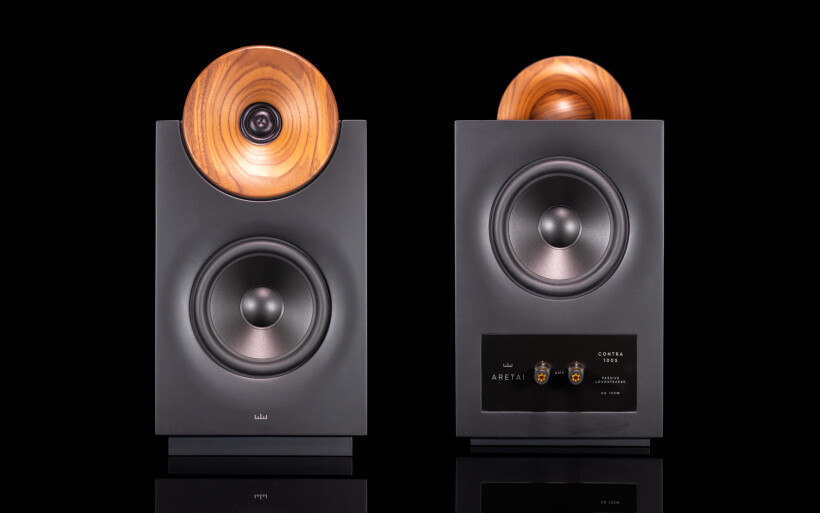 Given the Aretai’s willingness to effortlessly fire multiple large thunderous blows in series, the Vox nowhere near this capable on that score felt more innocent and ethereal. On top of three Carbide Bases per channel it tapped into additional power reserves, reduced room talk and developed extra heft, but even then it still couldn’t match the Contra 100S’ downstairs might and shove. However, the noticeably more illuminated, investigative, articulated and contoured Swiss had its bloody revenge on spatial tasks; finer outlined virtual shapes, higher pronunciation and focus, greater layering complexity and more surrounding landscapes busy with dust particles suspended more visibly in that space. At that point all the audible disparities between both contestants were self-explanatory and not surprising at all. The Latvian’s sensibly lower tonal center of gravity had to make it the darker more grounded product that early on had my attention primarily on steroids, scale and tonal mass. The Vox 3afw’s tuning emphasized midrange and upwards, openness, clarity, spatial accuracy and the lot. After that comparison I’d gladly combine the Aretai’s bonkers bass output, control over it and willingness to slam with exceptional immersion, investigative nature and spatial qualities of the Vox. That way I’d get the best of both worlds. I also imagine that Srajan’s main 2.1 setup delivers performance roughly in that ballpark.
Given the Aretai’s willingness to effortlessly fire multiple large thunderous blows in series, the Vox nowhere near this capable on that score felt more innocent and ethereal. On top of three Carbide Bases per channel it tapped into additional power reserves, reduced room talk and developed extra heft, but even then it still couldn’t match the Contra 100S’ downstairs might and shove. However, the noticeably more illuminated, investigative, articulated and contoured Swiss had its bloody revenge on spatial tasks; finer outlined virtual shapes, higher pronunciation and focus, greater layering complexity and more surrounding landscapes busy with dust particles suspended more visibly in that space. At that point all the audible disparities between both contestants were self-explanatory and not surprising at all. The Latvian’s sensibly lower tonal center of gravity had to make it the darker more grounded product that early on had my attention primarily on steroids, scale and tonal mass. The Vox 3afw’s tuning emphasized midrange and upwards, openness, clarity, spatial accuracy and the lot. After that comparison I’d gladly combine the Aretai’s bonkers bass output, control over it and willingness to slam with exceptional immersion, investigative nature and spatial qualities of the Vox. That way I’d get the best of both worlds. I also imagine that Srajan’s main 2.1 setup delivers performance roughly in that ballpark.
The Contra 100S’ thicker rounder bulkier profile featured less of the typical full-range flavor than the Vox, but it belonged to the same family nonetheless. The former not even one bit spatially confused or stuffy would’ve still emerged as the more pronounced resolved product versus many regular speaker sets. Here it’s all a matter of one’s reference points really. Mine happens to be radiant, spatially liberated, explicit, quicksilvery and pinpoint accurate. Although the Aretai introduced itself mainly as an elegant heavy hitter that hadn’t a clue how to produce overbearing wooly mushy bass, its list of assets was far longer. In nearfield it evaporated from my room with childish ease and rendered all key sound sources close, vivid, pronounced and touchable on highly oxygenated landscapes. These frames were bolder, taller and internally denser than I’m used to yet perfectly visible even in comparison to the nearby Vox that in my roster reigns supreme in this regard. The Aretai also turned i.e. unamplified string instruments into more raw, powerful and immediate versions of themselves, which was the direct upshot of its ability to move more air and go lower than the Swiss. Along with increasing volume it just kept releasing more and more energy from their resonant boxes, while its opponent focused primarily on strings had them more nuanced, delicate, zesty and glossier. Both these takes were equally intense and engaging, just different.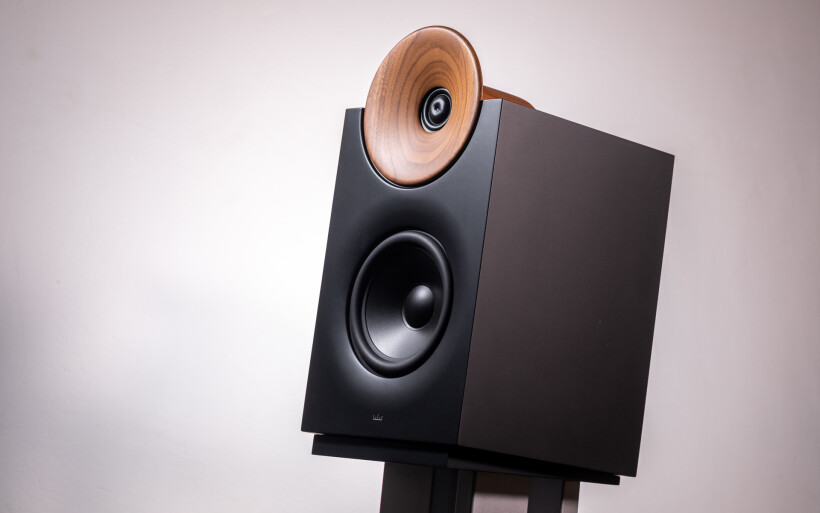 Heavy music wants speakers tailored primarily for rawness and composure, albeit to at least some extent reinforced with density, soft edges and overall forgiveness. The Vox isn’t like that, its body with every single muscle fiber visible under paper-thin wiry skin is fit for marathons and hours of cardio, but not heavy lifting. Here the Aretai’s thicker bones and extra meat on them make it ideal for that activity. It granted me access to my playlist’s forbidden metal/industrial/synth corners primarily because of the ongoing sensation of a huge shout-free wall of sound very effortlessly moved towards me. With such repertoire the Contra 100S was spot on instantaneous, elastic, angry, gutsy, humid and explosive regardless of volume levels, just to drop that attitude minutes later and engage its full-range virtues on calm fetching sensual recordings. You be the judge whether its wideband flavor in a dense gravy is more up your alley than the sunnier leaner more insightful character of the Vox. The Aretai’s skill set however makes it ready for challenges beyond the scope of its aurally more delicate posh competitor and one highly universal product to boot.
Heavy music wants speakers tailored primarily for rawness and composure, albeit to at least some extent reinforced with density, soft edges and overall forgiveness. The Vox isn’t like that, its body with every single muscle fiber visible under paper-thin wiry skin is fit for marathons and hours of cardio, but not heavy lifting. Here the Aretai’s thicker bones and extra meat on them make it ideal for that activity. It granted me access to my playlist’s forbidden metal/industrial/synth corners primarily because of the ongoing sensation of a huge shout-free wall of sound very effortlessly moved towards me. With such repertoire the Contra 100S was spot on instantaneous, elastic, angry, gutsy, humid and explosive regardless of volume levels, just to drop that attitude minutes later and engage its full-range virtues on calm fetching sensual recordings. You be the judge whether its wideband flavor in a dense gravy is more up your alley than the sunnier leaner more insightful character of the Vox. The Aretai’s skill set however makes it ready for challenges beyond the scope of its aurally more delicate posh competitor and one highly universal product to boot.
It’s worth mentioning that I’ve been using Trilogy 995R monos exclusively as 55wpc class A devices. Their 0.25Ω output impedance with this report’s 4Ω load resulted in the damping factor of 16. This low value meant that my amps had minimal control over the Aretai’s rear woofer strokes, so their cones could pump more air and effectively produce tout bass as described. If this were a ported speaker set, I suspect that a more authoritative amp would’ve been mandatory to keep lows tight and free from unpleasant rumble. No escape tunnel, no issue, I got away with the murder. The ‘what if’ question remained. Small stand-mount speakers groomed for big ballsy sound can be notorious loads after all. To find out whether the Aretai actually benefited from extra power, one button press on each 995R mono’s forehead turned them into 350wpc class AB towers of a lower output impedance. Stiffer overall suspension, leaner less fruity bass and decreased euphony was the verdict that didn’t include any gains on quickness, openness, resolution and anything else really. Although in my listening space that setting was a major step back, it may be just the ticket in situations where the Contra 100S has to remain close to the wall to not disturb a room’s décor. My gut tells me that it would’ve formed a highly synergistic team with quick lean smooth solid-state companions capable of outputting 100wpc or more. Here I see Kinki Studio EX-M1 as the budget option, then AGD Productions Tempo/Alto stack in the financial middle and Nagra Classic INT on the luxurious end. Not knowing too many purist tube amps, I’ll plead the fifth on these. Let’s wrap.
During this assignment sound|kaos Vox 3afw once more proved spectacularly voiced as is, even though its side-firing squad didn’t quite cover the entire gamut. It just took a similar speaker set superior on bass to get the memo. The Aretai had to sacrifice some of the inherently investigative full-range aroma and say nay to low power amps to nail that task, but it was a fair trade. Its compact brilliantly executed dress code and gearing for sonic elegance as much as readiness to rock hard make it a highly accomplished fully domesticated widebander type for the masses. It truly does far more than its small footprint suggests and I’ve found it as unique as the sound|kaos, just for different reasons. The price below accurately reflects all that. My tip of the hat to Jānis and Edgars for landing such a stunner!
Post-Munich 2023 update
A reviewer’s opinion about a specific product can be and often is a personal matter to its maker. It’s all cherries when that feedback consists only praises, but it’s fair to ask about what happens when it doesn’t. You’d think that i.e. a speaker or DAC house without a reference point other than its own (that really happens) may want to pay attention to an opinion of someone who sampled dozens of such products. Although that seems the smart play, over the years I’ve encountered several manufacturers who proved immune to constructive criticism and were highly defensive in the process. Although I merely reported what I’ve heard as per the job description, they still knew better what that was. Suffice it to say, when ego grows large enough to effectively kill common sense, my blacklist gets longer too. Since Aretai Audio’s co-founder Jānis Irbe did the exact opposite during the recent Munich event, this small well-deserved update is in order.
Many speaker sets with strong well-developed bass as the foundational driving force are often perceived as anchored earthy texturally ripe types. Aretai Contra 100S groomed for highly atmospheric meaty sound fits that profile to a tee. The thing is, such voicing also means lesser emphasis on radiance, luminosity and air, while my stationary sound|kaos Vox 3afw monitors reverse this order. One exposed trait group means lesser bias elsewhere and that’s just the way it is. Anyway, Jānis utmost happy about the outcome of the above story (originally published in late 2022) was particularly fond of how it encapsulates what their most compact performer does and why. Shortly after going live with this review, the Aretai loaner was returned to the manufacturer.
Fast forward to late May 2023 and Munich’s High End event, where Aretai teamed up with Moonriver Audio, Pachanko Labs, ViaBlue and Takumi. Their rather small room located on the ground floor of the M.O.C. center accommodated three Contra models; 100S monitors plus 200F and 350F floorstanders. Jānis was on duty when I stopped by. He encouraged me to take a seat and have a listen, so I did also interested in learning how his Contra 100S performed there. It didn’t take long to register spatially more liberated, illuminated, outlined and all in all quicker sunnier sound, albeit as brimming with the well-pronounced full-range aroma, thunderous and sorted on bass as I’ve remembered it. This meta shift in comparison to the experience from my listening space several months back was very clear, so I had to ask. Jānis only smiled and explained that the feedback from the review above got him inspired to alter Aretai Contra 100S and make it even better. It took a while to rework its crossover, but the change that followed turned the already very good product into a noticeably more accomplished version of itself. That’s the gist. Aretai will rework its unmodified versions free of charge, so if you happen to own one, please drop these Latvians a mail. More importantly, I applaud Jānis for being this open-minded, upfront and forward-thinking. In this business it truly takes balls to have such a mindset. It’s as appreciated as it is rare.
Associated Equipment:
- Amplifier: Trilogy 995R, FirstWatt F7, Enleum AMP-23R
- DAC: LampizatOr Pacific (KR Audio T-100 / Living Voice 300B + KR Audio 5U4G Ltd. Ed.)
- Speakers: Boenicke Audio W11 SE+, sound|kaos Vox 3afw
- Transport: Innuos Statement, fidata HFAS1-S10U
- Preamplifier: Trilogy 915R, Thöress DFP
- Speaker cables: Boenicke Audio S3, LessLoss C-MARC
- Headphones: HifiMan Susvara
- Speaker signal conditioning: LessLoss Firewall for Loudspeakers, Boenicke ComDev
- Anti-vibration conditioning: 12x Carbide Audio Carbide Bases (under DAC, preamp and speakers)
- Interconnects: LessLoss Entropic Process C-MARC, Boenicke Audio IC3 CG
- Power components: Gigawatt PC-3 SE EVO+/LC-3 EVO, LessLoss C-MARC, LessLoss Entropic Process C-MARC, Boenicke Audio Power Gate, ISOL-8 Prometheus
- USB components: iFi audio Mercury3.0
- Rack: Franc Audio Accesories Wood Block Rack 1+3
- Network: Fidelizer EtherStream, Linksys WRT160N
- Music: NativeDSD
Retail prices of reviewed components in EU (excl. VAT):
- Aretai Contra 100S (wooden waveguides): €8’500
- Aretai Contra 100S (stock waveguides): €7’500
Manufacturer: Aretai


